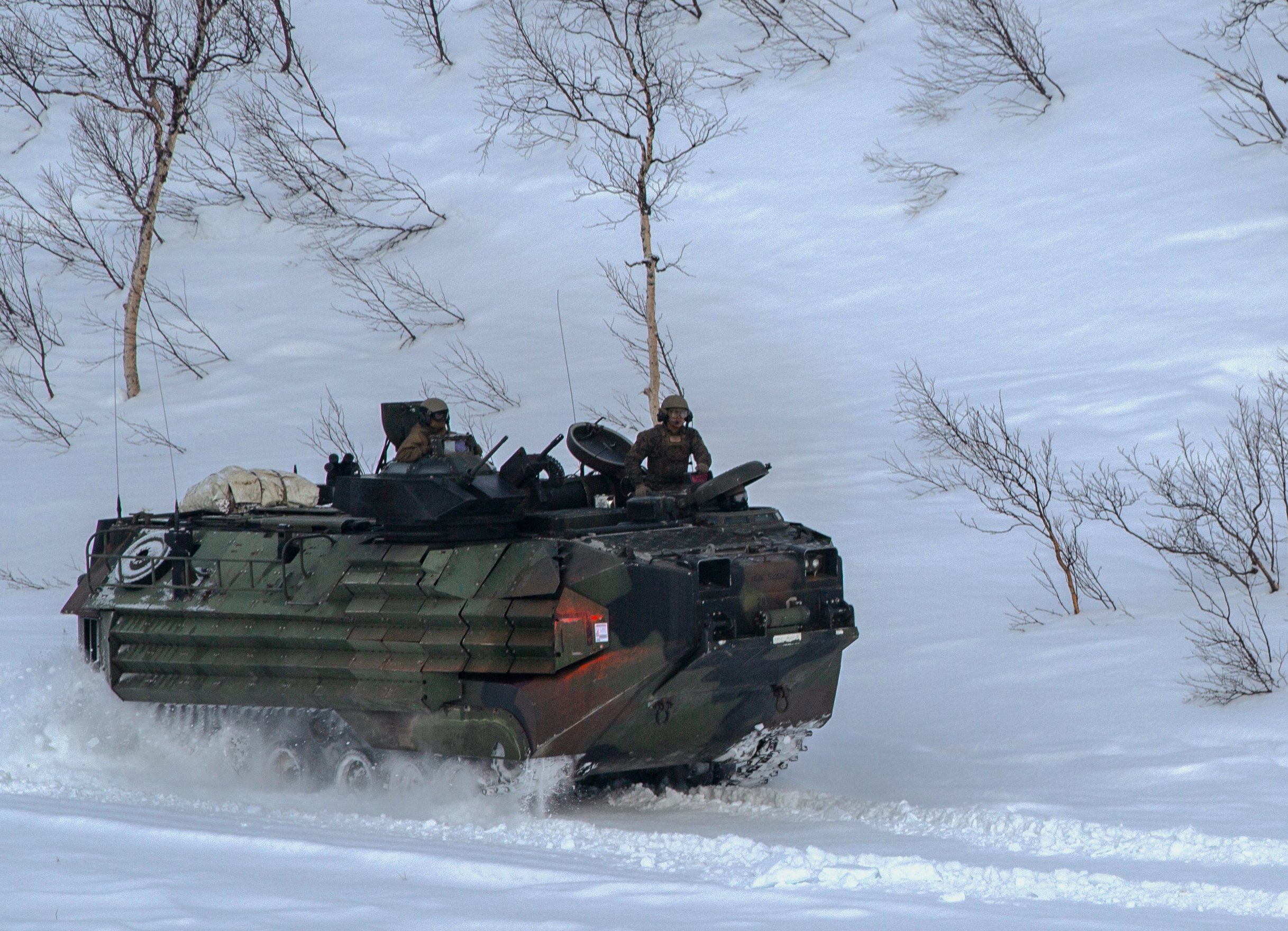
The Marine Corps will keep its fleet of decades-old Amphibious Assault Vehicles out of the water except in emergencies, the service announced on Wednesday.
The water ban on the AAVs makes permanent restrictions the Marines placed on the 1970s-era vintage amphibious armored personnel carriers following the AAV incident in 2020 that killed eight Marines and a sailor in a training incident off the coast of California and led to several subsequent investigations.
“The Marine Corps stands by the efficacy of the recommendations that came from the multiple investigations into the AAV mishap from the summer of 2020, and with those recommendations implemented and sustained, the AAV is a safe and effective vehicle for amphibious operations,” reads a statement from the service.
“That said, given the current state of the amphibious vehicle program, the Commandant of the Marine Corps has decided the AAV will no longer serve as part of regularly scheduled deployments or train in the water during military exercises; AAVs will only return to operating in the water if needed for crisis response. This decision was made in the interest of the long-term health of the amphibious vehicle programs and future capabilities. The AAV will continue to operate on land; 76 percent of its tasks are land-based. In doing so, we reserve the capability to reverse this decision should the need arise.”
The Marines have used the AAVs since the 1970s and they’ve been employed widely across the globe. The service is on its second attempt to replace the amtracs with the Amphibious Combat Vehicle – after the cancelation of the Expeditionary Fighting Vehicle in 2010.
The ACVs are under their own restrictions from waterborne operations.
“The Marine Corps will continue deployments with myriad lethal capabilities which currently exist, and we remain committed to fielding the Amphibious Combat Vehicle,” reads the statement.
“ACVs were temporarily suspended from open ocean waterborne operations as we worked to solve an issue that was identified with the towing mechanism. We expect that issue to be resolved soon and for ACVs to return to the water early in the New Year.”
The Marine Corps in early September announced the pause to ACV water operations due to the problem with the towing mechanism.
The ACV program entered full-rate production late last year, after completing the initial operational test and evaluation phase (IOT&E), which allows Marines to experiment with the platform and provide feedback on what could be improved.
For example, one issue Marines experienced during testing was punctures to the vehicles tires, but they could not address the problem quickly because the Marines didn’t have access to a jack. The Pentagon’s top weapons tester suggested the Marine Corps give all sections a kit for spare tires to address this problem.
The Marine Corps is slated to buy four ACV variants – a personnel carrier, a recovery variant, a command and control variant and a vehicle with 30-mm cannon variant.
BAE Systems, which is building the ACV for the service, started with the personnel variant, which was the type of ACV the Marine Corps had been testing during IOT&E. in February, BAE announced it had provided the Marine Corps with the first command and control ACV.
The following is the complete Dec. 15, 2021 statement from the Marine Corps.
The Marine Corps stands by the efficacy of the recommendations that came from the multiple investigations into the AAV mishap from the summer of 2020, and with those recommendations implemented and sustained, the AAV is a safe and effective vehicle for amphibious operations. That said, given the current state of the amphibious vehicle program (the program that manages both AAVs and ACVs), the Commandant of the Marine Corps has decided the AAV will no longer serve as part of regularly scheduled deployments or train in the water during military exercises; AAVs will only return to operating in the water if needed for crisis response. This decision was made in the interest of the long-term health of the amphibious vehicle programs and future capabilities. The AAV will continue to operate on land; 76% of its tasks are land-based. In doing so, we reserve the capability to reverse this decision should the need arise.
The Marine Corps will continue deployments with myriad lethal capabilities which currently exist, and we remain committed to fielding the Amphibious Combat Vehicle.
ACVs were temporarily suspended from open ocean waterborne operations as we worked to solve an issue that was identified with the towing mechanism. We expect that issue to be resolved soon and for ACVs to return to the water early in the New Year.





